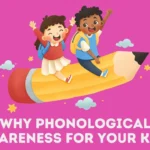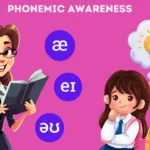Certainly! The evolution of e-governance has been a fascinating journey that has transformed the way governments interact with citizens. It all began with the emergence of the internet, which provided governments with a platform to reach citizens in a more efficient and effective way.
As governments started creating websites, they began to offer online services such as tax filing, bill payments, and application processing, which made it much easier for citizens to interact with the government without the need to physically visit government offices.
What is e-governance
E-governance, also known as electronic governance, refers to the use of electronic communication technologies to facilitate the delivery of government services and information to citizens.
Evolution of E-Governance
The evolution of e-governance has been a gradual process, with several key developments over the past few decades. Here is a more detailed look at the evolution steps of e-governance:
1. Emergence of the internet
The emergence of the internet in the 1990s was a major turning point in the evolution of e-governance. With the internet, governments had a powerful tool to connect with citizens and provide information and services online. As governments began creating websites, citizens could access government information from anywhere with an internet connection. This led to increased transparency and accessibility of government services.
2. Online services
As internet usage became more widespread, governments started offering online services such as tax filing, bill payments, and application processing. Online services made it easier for citizens to interact with the government without the need to physically visit government offices. This not only saved time and effort for citizens but also reduced the workload on government officials.
3. Mobile technology
With the proliferation of mobile devices, governments adapted to this trend and started developing mobile apps to provide services and information to citizens on-the-go. Mobile apps make it even easier for citizens to access government services and information, as they can be used anywhere and at any time. Governments can also use mobile apps to send notifications and alerts to citizens about important updates or upcoming events.
4. Social media
Social media platforms such as Facebook, Twitter, and Instagram have become powerful tools for governments to communicate with citizens. Governments use social media to provide information and updates, and to receive feedback from citizens in real-time. Social media has also proven to be an effective way for governments to reach out to younger citizens, who may be more likely to engage with government on social media than through traditional channels.
5. Big data and analytics
Governments are increasingly using big data and analytics to make data-driven decisions. By analyzing large amounts of data, governments can identify trends and patterns that can help them make more informed decisions about service delivery and resource allocation. This can lead to more efficient and effective government services that better meet the needs of citizens.
6. Artificial intelligence and machine learning
Governments are also exploring the use of artificial intelligence and machine learning to improve service delivery and decision-making processes. These technologies can help automate repetitive tasks, improve data analysis, and enhance communication with citizens. For example, chatbots powered by artificial intelligence internet can provide citizens with quick and accurate answers to common questions, freeing up government officials to focus on more complex tasks.
Overall, the evolution of e-governance has been driven by a desire to make government services more accessible, efficient, and transparent for citizens. By leveraging the latest technology and innovation, governments can continue to improve the quality of services and engagement with citizens, helping to build more effective and responsive governments.
What is e-Governance in one word?
Digitalization.




